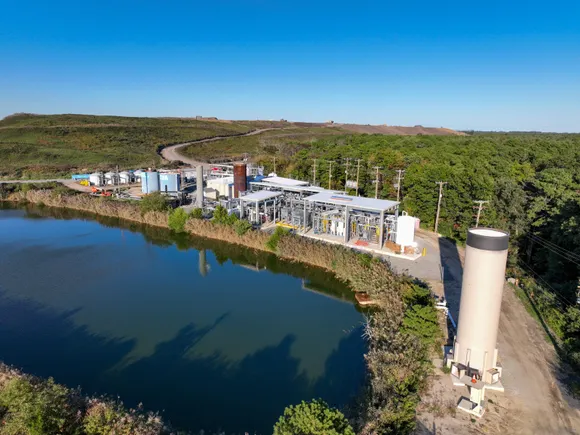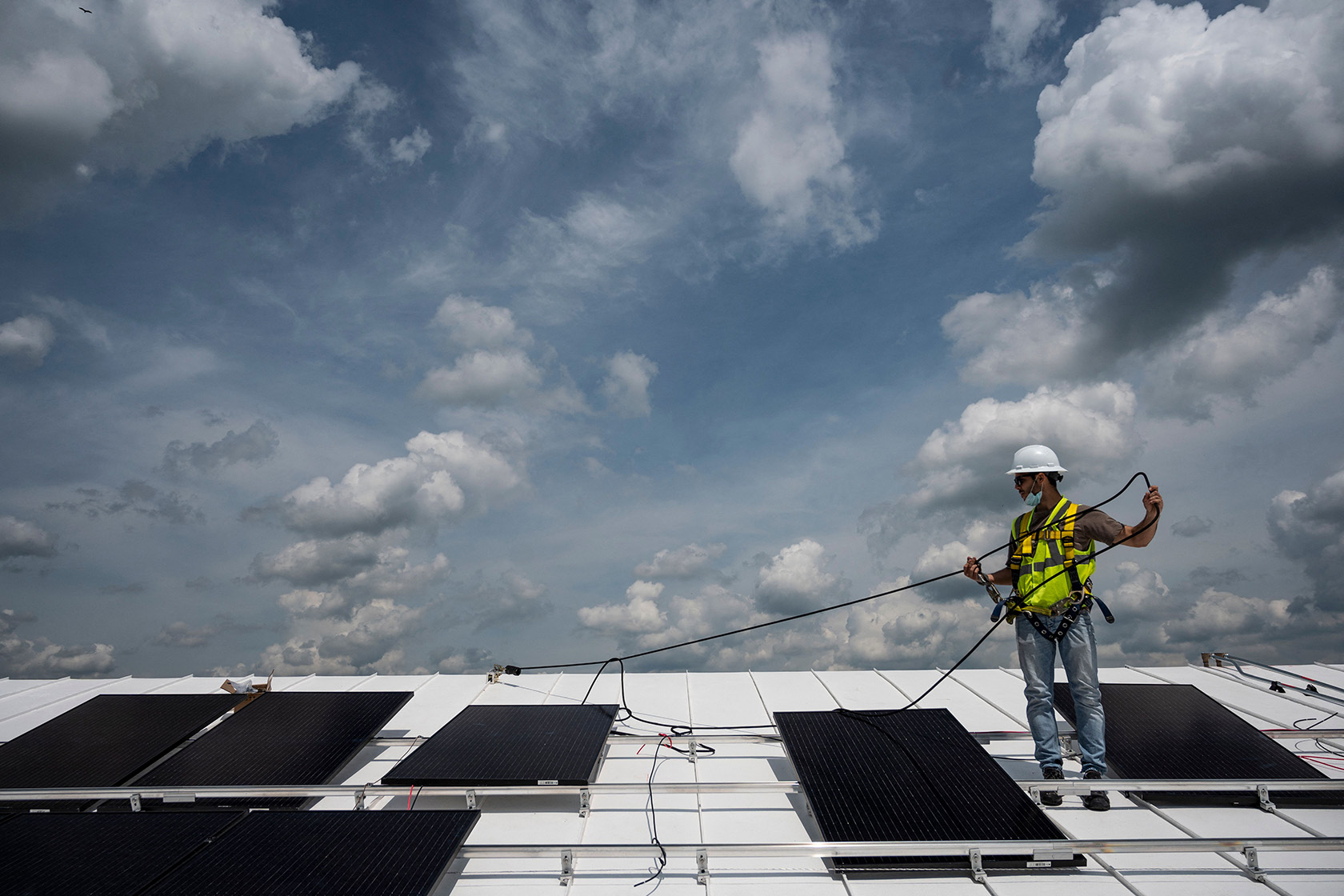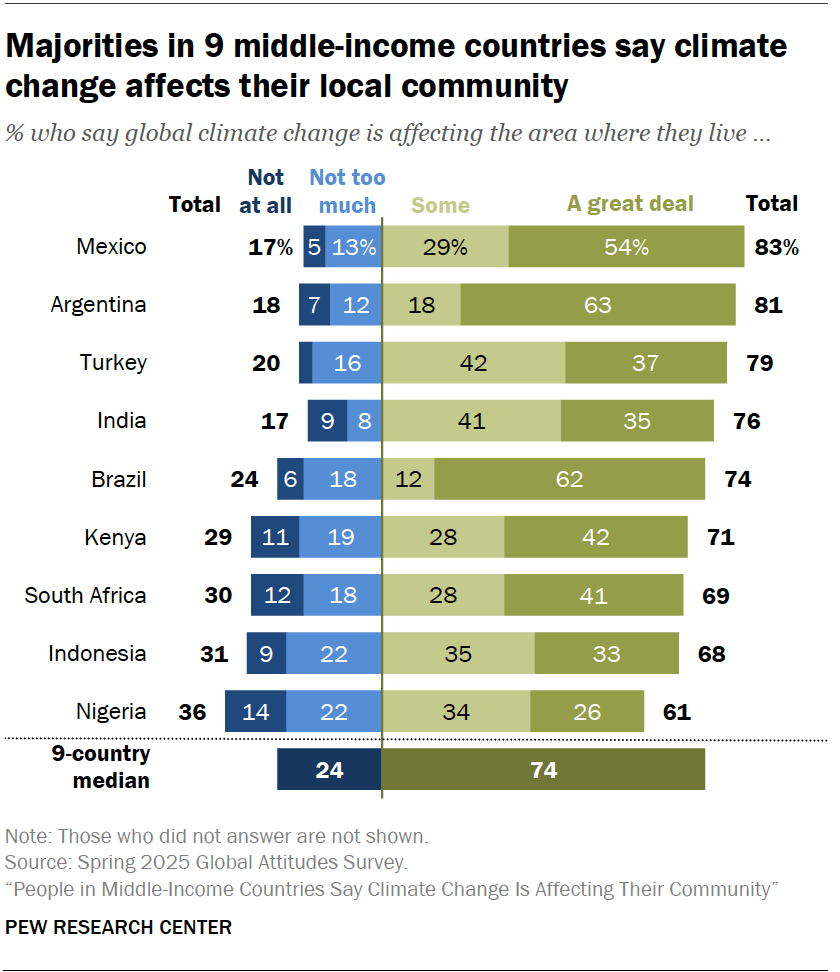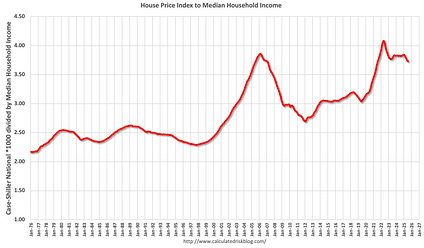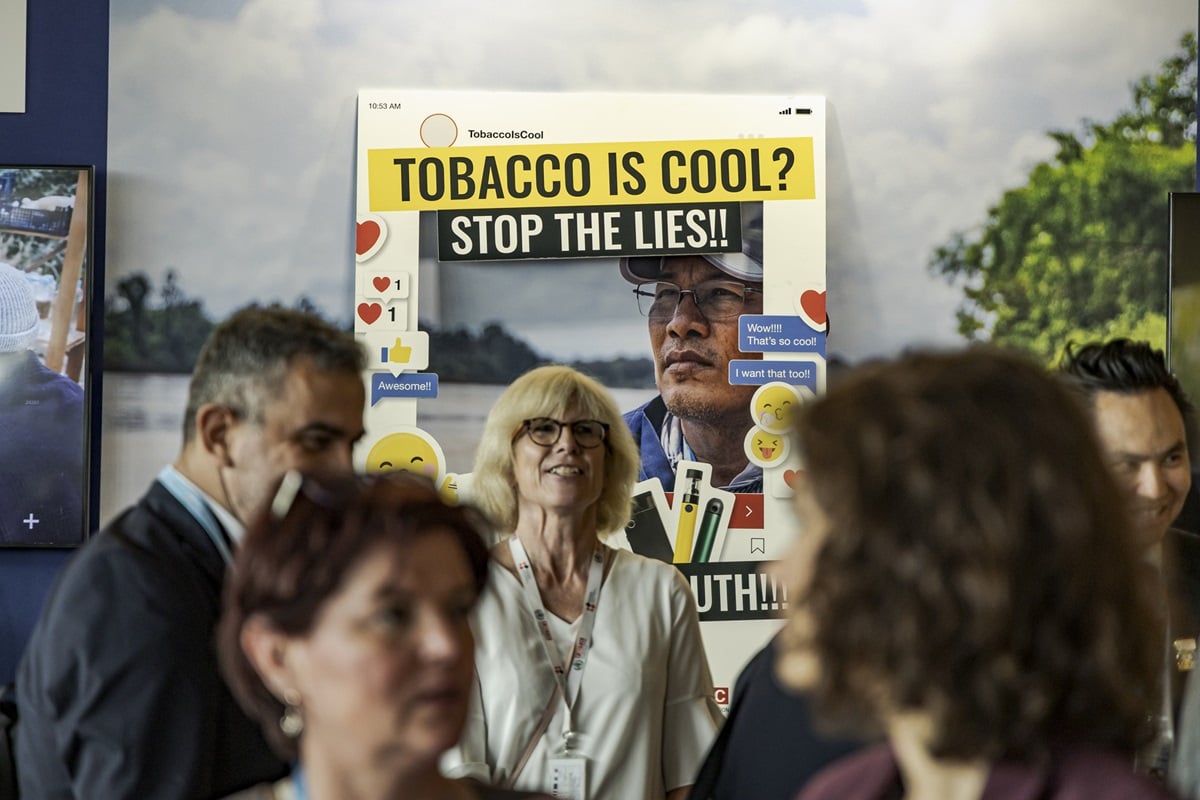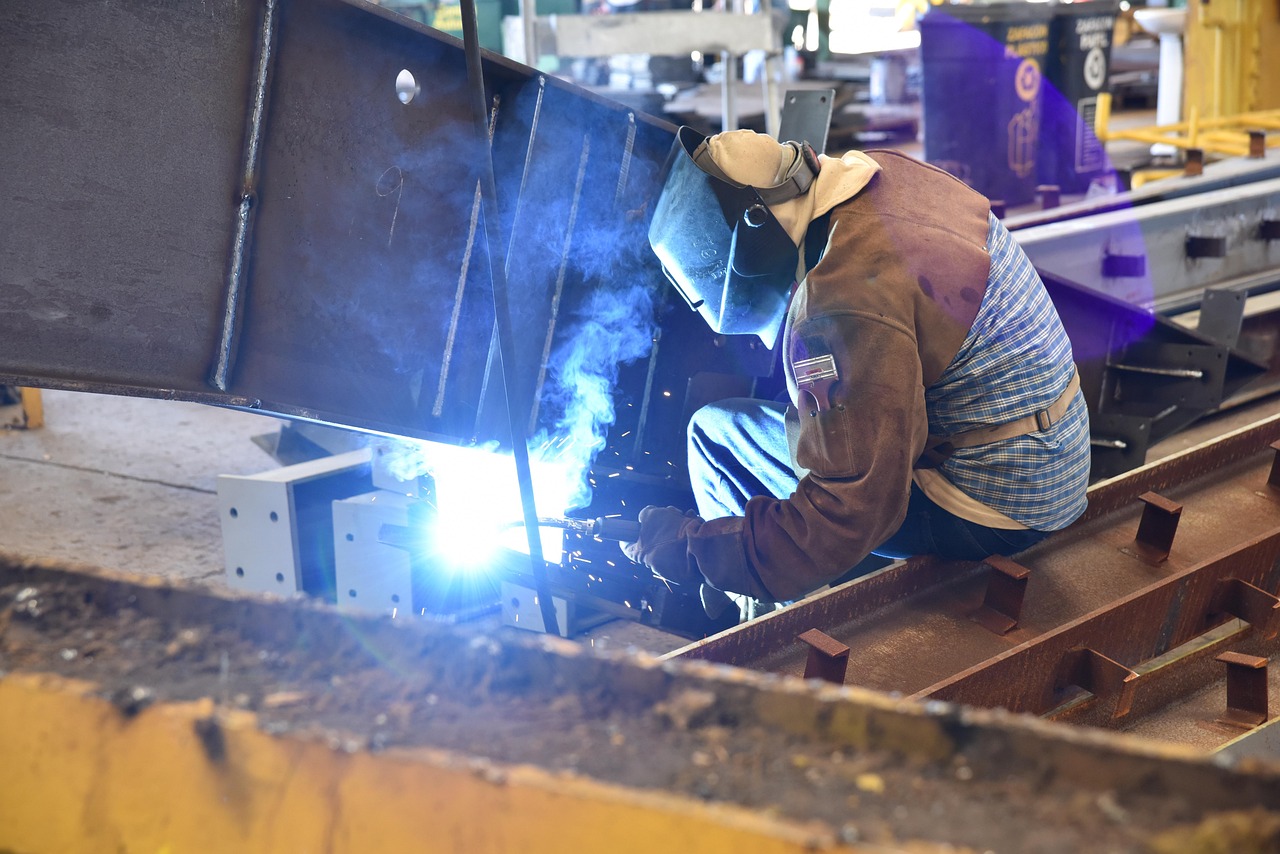What could it take to bring back US manufacturing jobs? – Scripps News

Report on US Manufacturing Sector and Alignment with Sustainable Development Goals
SDG 8: Challenges to Decent Work and Economic Growth in US Manufacturing
- Policy initiatives, such as tariffs, are being implemented to stimulate domestic production, aiming to foster sustained and inclusive economic growth.
- A significant labor deficit challenges this growth, with federal data indicating nearly half a million manufacturing jobs remain unfilled.
- Despite a tripling in new factory construction over the last five years, recent Bureau of Labor Statistics data shows a net loss of 7,000 jobs in a single month, highlighting a disconnect between industrial capacity and workforce availability.
- The current workforce is aging and approaching retirement, posing a threat to the sector’s stability and productivity.
SDG 9: The Transition to Sustainable Industrialization and Innovation
- The American manufacturing sector is undergoing a fundamental shift towards advanced, technology-driven production, aligning with SDG 9’s goal of fostering innovation and building resilient infrastructure.
- Financial analyst Stephen Kates notes that modern manufacturing jobs are not based on unskilled labor but require interaction with high-end technology.
- Achieving a revitalized and sustainable industrial base is a long-term objective, projected to require a minimum of a decade of concerted effort and investment.
SDG 4: Addressing the Skills Gap through Quality Education
- Advanced Skill Requirements: The majority of modern manufacturing positions demand high-level technical skills, often requiring bachelor’s or advanced degrees. This underscores the need for quality tertiary and vocational education tailored to industry needs.
- Educational Curriculum Reform: Academic institutions are encouraged to expand curricula to include courses in technology-driven production and elevate the profile of manufacturing careers to build a pipeline of qualified talent.
- Workforce Development Initiatives: An executive order was signed to establish one million registered apprenticeship programs to promote skills development. However, the efficacy of this initiative is potentially undermined by proposed budget cuts of $1.6 billion to workforce development.
SDG 10: Reducing Inequalities through Labor Market Incentives
- Improving Job Attractiveness: To secure a skilled workforce and promote decent work, employers are advised to offer higher pay, improved benefits, and other incentives.
- Addressing Geographic Disparities: A significant geographical inequality exists, with highly skilled workers often concentrated in coastal areas while new manufacturing plants are being established elsewhere.
- Promoting Labor Mobility: The use of relocation incentives is recommended as a strategy to overcome this regional disparity, encouraging a more equitable distribution of skilled labor and economic opportunities across the country.
Analysis of SDGs, Targets, and Indicators
1. Which SDGs are addressed or connected to the issues highlighted in the article?
-
SDG 8: Decent Work and Economic Growth
This goal is central to the article, which focuses on the challenges of job creation and sustainability in the U.S. manufacturing sector. The text discusses the issue of nearly “half a million manufacturing jobs” remaining unfilled, the need for “better-paying careers,” and the overall effort to revive the industrial base to foster economic growth.
-
SDG 9: Industry, Innovation and Infrastructure
The article directly addresses the goal of building resilient infrastructure and fostering innovation and industrialization. It highlights the push to have companies “start producing goods in the U.S.,” the fact that “new factory construction has tripled in the past five years,” and the technological shift in the industry, where jobs now require high-level skills due to “dealing with a lot of high-end technology.”
-
SDG 4: Quality Education
This goal is connected through the discussion of the skills gap in the manufacturing workforce. The article points out that modern manufacturing jobs are “extremely skilled labor” often requiring “bachelor’s degrees” or “advanced degrees.” It explicitly states that “schools will need to expand their curriculum to include more courses in technology-driven production” and mentions the creation of “one million registered apprenticeship programs” to provide relevant vocational training.
2. What specific targets under those SDGs can be identified based on the article’s content?
-
Target 8.2: Achieve higher levels of economic productivity through diversification, technological upgrading and innovation.
The article supports this target by describing the evolution of manufacturing jobs. Financial analyst Stephen Kates is quoted saying, “Manufacturing jobs today are not unskilled labor… you’re dealing with a lot of high-end technology.” This points directly to the need for technological upgrading and innovation to increase productivity.
-
Target 8.5: By 2030, achieve full and productive employment and decent work for all.
The article’s focus on the “half a million manufacturing jobs” that “remain unfilled” highlights the challenge of achieving full employment. The call for employers to attract candidates by “offering higher pay, benefits and relocation incentives” directly relates to the concept of “decent work.”
-
Target 8.6: By 2020, substantially reduce the proportion of youth not in employment, education or training.
The plan to create “one million registered apprenticeship programs” is a direct policy action aimed at providing youth with training and a pathway to employment, thus addressing this target.
-
Target 9.2: Promote inclusive and sustainable industrialization and, by 2030, significantly raise industry’s share of employment.
The entire premise of the article, which is about reviving the “industrial base of America” and filling manufacturing jobs, aligns with this target. The discussion revolves around increasing the number of jobs in the manufacturing sector, although it notes a recent loss of “7,000 jobs in June.”
-
Target 4.4: By 2030, substantially increase the number of youth and adults who have relevant skills, including technical and vocational skills, for employment, decent jobs and entrepreneurship.
This target is clearly identified through the article’s emphasis on the skills gap. The statement that “factory jobs of today require a high level of skill” and the need for schools to “expand their curriculum” and for colleges to prioritize “high-end manufacturing” in career services directly point to the need for more adults with relevant technical skills.
3. Are there any indicators mentioned or implied in the article that can be used to measure progress towards the identified targets?
-
Number of unfilled jobs in a sector
The article explicitly states that “nearly half a million manufacturing jobs remain unfilled.” This figure serves as a direct indicator of the gap between labor demand and supply and can be used to measure progress towards full and productive employment (Target 8.5).
-
Rate of job creation/loss in the manufacturing sector
The mention that the “manufacturing sector lost 7,000 jobs in June” is a specific data point that can be used as an indicator for measuring industry’s share of employment (Target 9.2).
-
Number of available apprenticeship programs
The executive order to create “one million registered apprenticeship programs” provides a quantifiable indicator to track progress on providing vocational training and reducing the proportion of youth not in employment, education, or training (Targets 4.4 and 8.6).
-
Rate of new factory construction
The article notes that “new factory construction has tripled in the past five years.” This can serve as an indicator of investment in industrial infrastructure and the potential for future job growth (Target 9.2).
-
Wage levels and benefits
The suggestion that employers need to attract candidates by “offering higher pay, benefits and relocation incentives” implies that wage and benefit levels are key indicators for measuring “decent work” (Target 8.5).
4. Summary Table of SDGs, Targets, and Indicators
| SDGs | Targets | Indicators |
|---|---|---|
| SDG 8: Decent Work and Economic Growth |
8.2: Achieve higher levels of economic productivity through technological upgrading and innovation.
8.5: Achieve full and productive employment and decent work for all. 8.6: Substantially reduce the proportion of youth not in employment, education or training. |
– Skill level of manufacturing jobs (requiring degrees for “high-end technology”).
– Number of unfilled jobs (nearly half a million). – Number of registered apprenticeship programs (goal of one million). |
| SDG 9: Industry, Innovation and Infrastructure | 9.2: Promote inclusive and sustainable industrialization and significantly raise industry’s share of employment. |
– Rate of job creation/loss in the manufacturing sector (lost 7,000 jobs in June). – Rate of new factory construction (tripled in the past five years). |
| SDG 4: Quality Education | 4.4: Substantially increase the number of youth and adults who have relevant skills, including technical and vocational skills, for employment. |
– Number of workers with required skills (implied by the skills gap). – Number of available apprenticeship programs (goal of one million). – Inclusion of technology-driven production courses in school curricula. |
Source: scrippsnews.com

What is Your Reaction?
 Like
0
Like
0
 Dislike
0
Dislike
0
 Love
0
Love
0
 Funny
0
Funny
0
 Angry
0
Angry
0
 Sad
0
Sad
0
 Wow
0
Wow
0
























